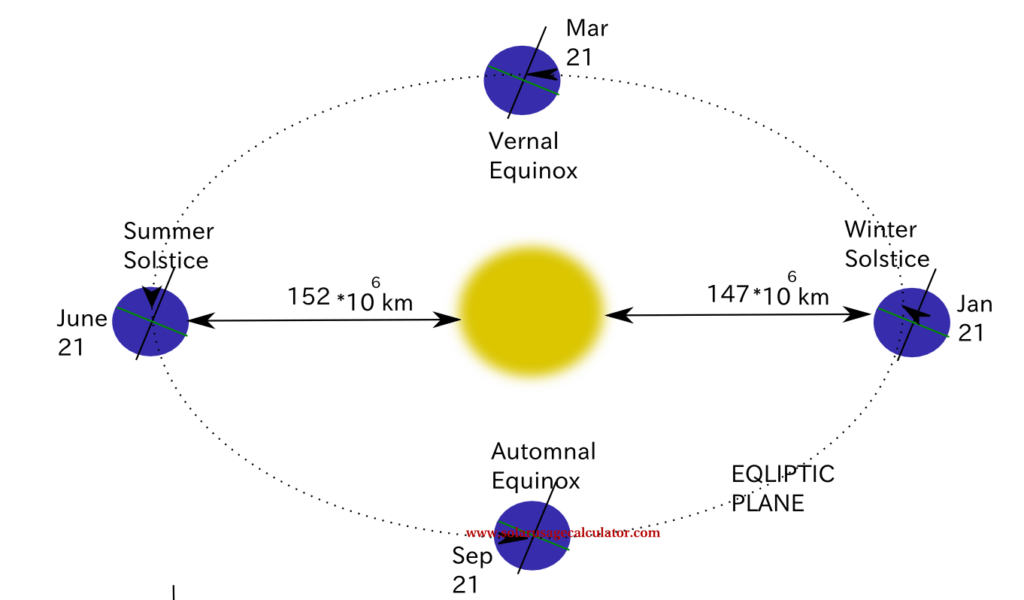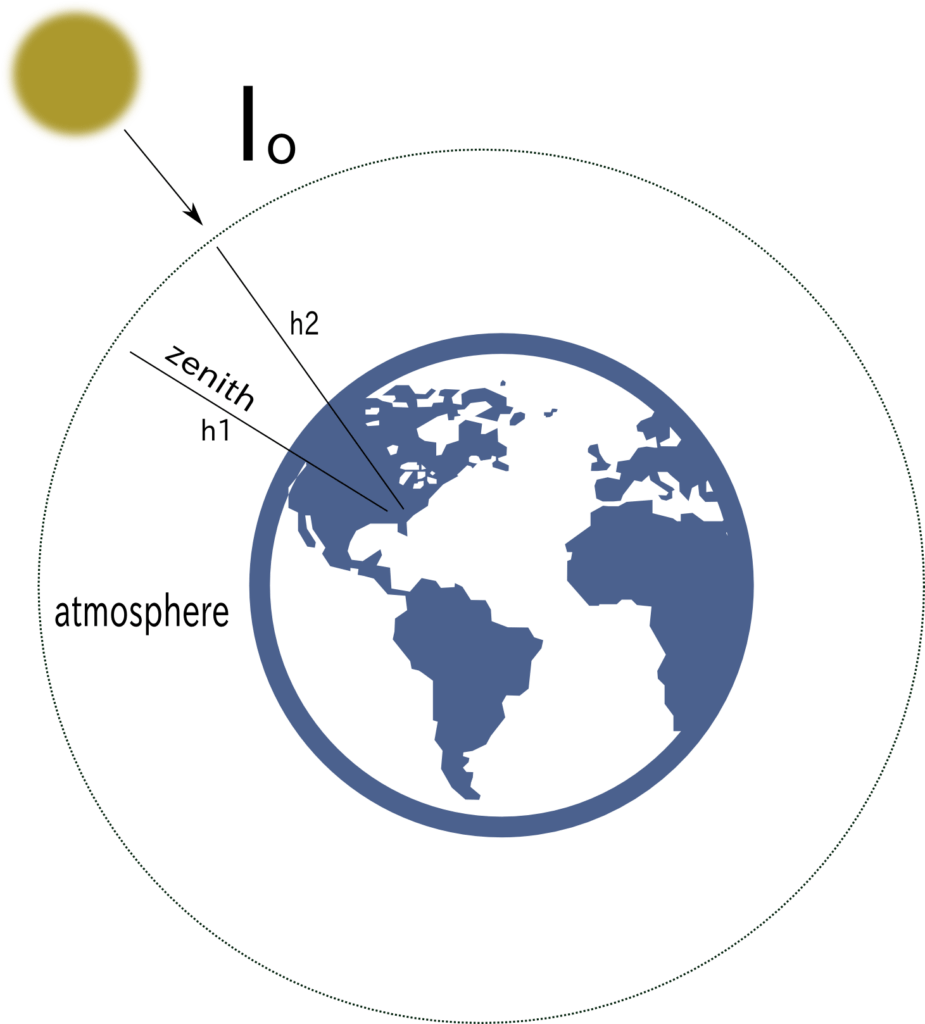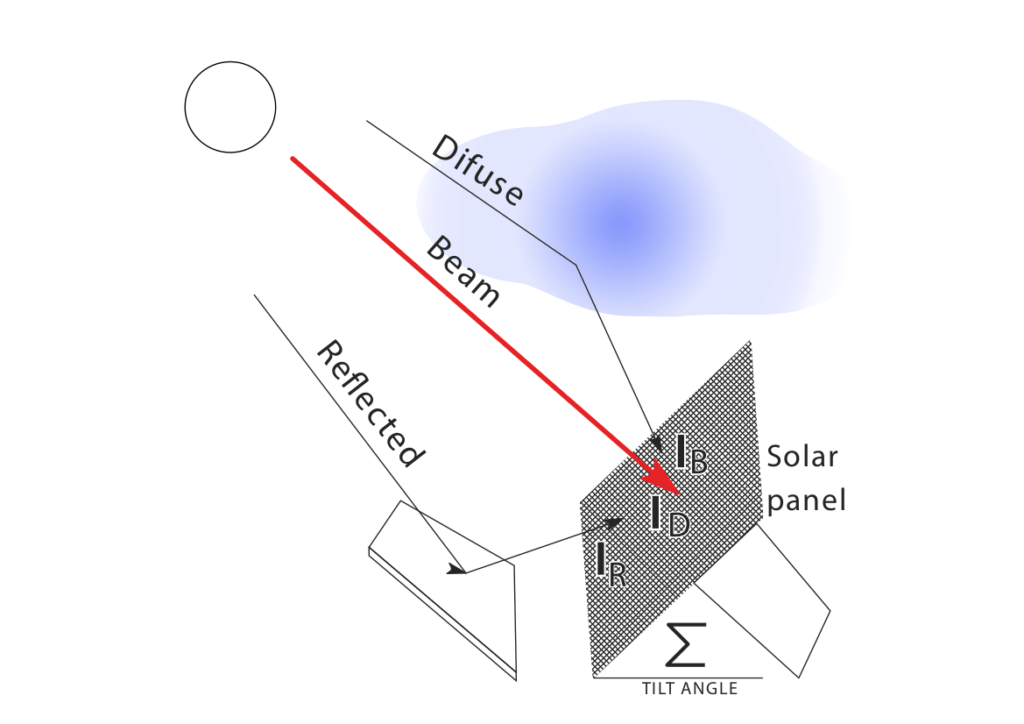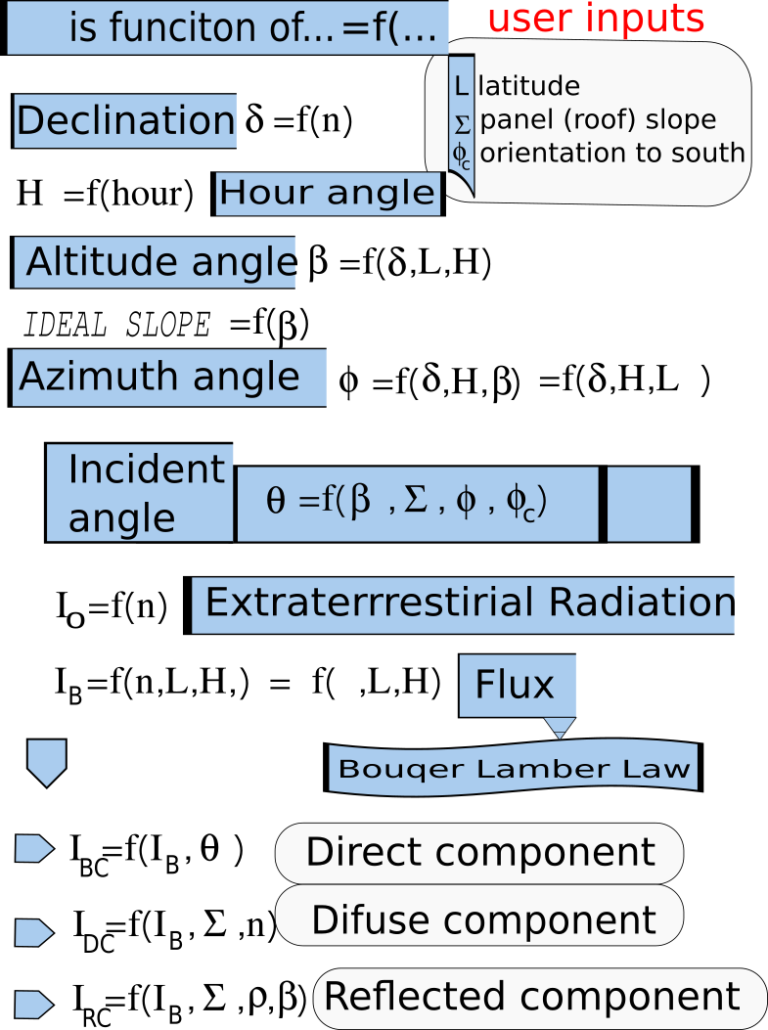We will continue wiht theorethical observation with solar usage therms
Solar constant
A solar constant is a measurement of the solar electromagnetic radiation available in a meter squared at Earth’s distance from the sun. It can be obtained from satellite measurements and from
Stefan-Bolzman constant. In January, when the sun is closest to the earth, the solar heat on the outer edge of the earth’s atmosphere is about 1400 W/m.2and when the sun is the farthest away, on July 4, it is about 1330 W/m2
We will assume for our calculations that it is 1377 W/m2

Extraterrrestirial Radiation I o
The distance between the Earth and the Sun changes during the year.
The solar radiation at the top of the atmosphere is called “extraterrestrial radiation.”
Due to the change in the distance between the Earth and the Sun, the extraterrestrial radiation is changing.

Flux of solar radiation IB
The flux of solar radiation which in the form of direct radiation reaches the earth’s surface is less than Io due to absorption and dispersion in the atmosphere. The estimation of irradiation on the earth’s surface is given by Beer-Lambert law. This measurement can be represent as the energy of solar radiation that falls normally per square meter per unit time the surface of the Earth..

3 types of radiation
Solar energy is transmitted through three types of radiation:
- Direct IB
- Diffuse I
- Reflected. IR
Direct component I BC
To calculate the direct radiation component, it is necessary to calculate the incident angle under which direct solar rays fall on the observed module. This angle is a function of the altitude, azimuth angle, and tilt of the module.
Difuse component IDC


When the sun’s rays pass through the atmosphere, a part of that radiation is scattered when it encounters clouds or dust particles. Considering the stochastic characteristic of that process, it cannot be considered that this radiation component has the same radiation from all directions. If the module were placed in a horizontal plane, then this component would reach the maximum value that can be used on a cloudy day.
Reflected component IRC
Solar rays that fall on the earth are partially reflected, so the intensity of the reflection depends on the surrounding surface. The qualitative measure of reflection ranges from 0.1 for asphalt to 0.8 for snow.
The total radiation reaching the module consists of three components: direct , difuse and reflected.
Algorithm and functions
The SPAC ( solar panel angle calculator ) application uses the following dependency functions for calculation

And we have a secret spice of our kitchen that we use with calculation the ideal angle for fixed panels . That is the mean monthly sunshine hours for each city in the drop-down menu for selecting the city. Chears!


One thought on “Solar energy”
Correct explanation